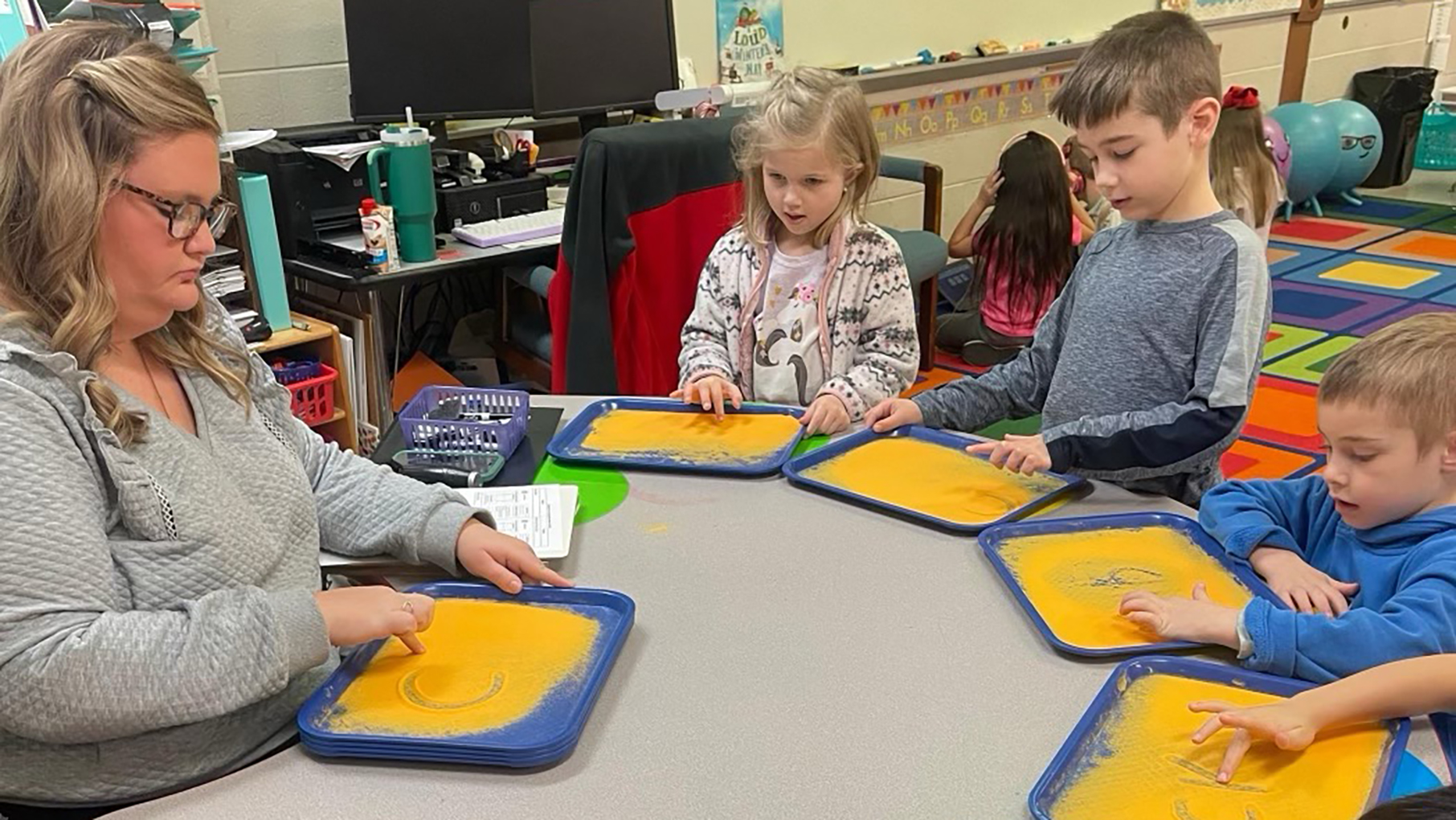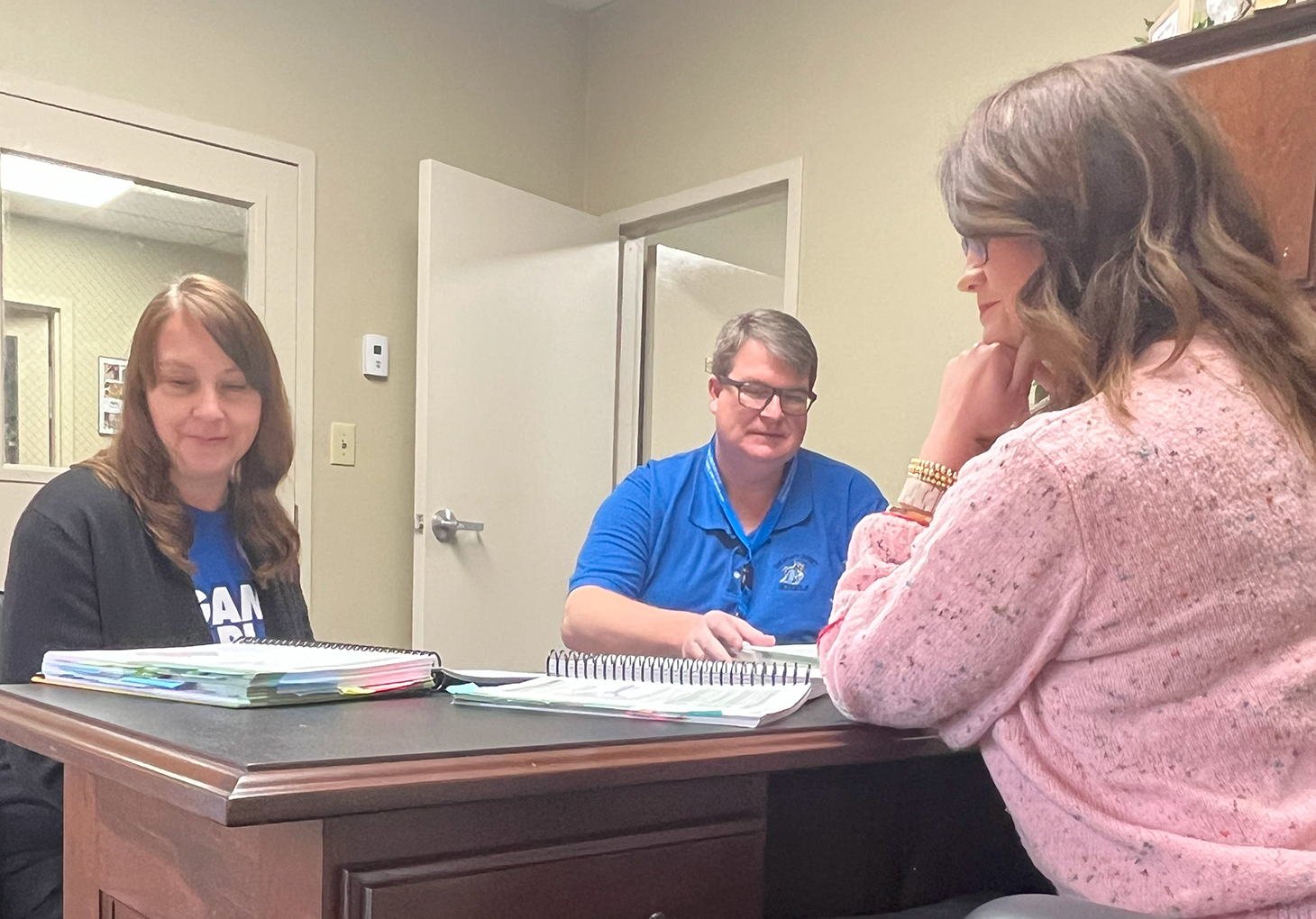
Stacy Crawford Bewley
As a high school special education English teacher with more than a decade of experience, I pride myself on being a problem solver for my students. Can’t decode words? I have strategies. Need help with comprehension? Let’s break things down. I am confident that the majority of my students leave my classroom with tools to help them read and comprehend a variety of texts.
What has been missing from my instruction is a focus on writing, particularly on grammar and mechanics. To tell you the truth, I had no idea where to begin.
So I plodded along, dragging my students behind me. I tried everything I knew to try – things I remembered from my own secondary education and methods I observed in the classrooms of highly skilled, experienced teachers. Sentence corrections to start the day? Check. Parts of speech drills? Yes, that, too. Workbooks? Ugh. I cannot begin to tell you how much red ink fell victim to my teaching.
Oh, sure, sometimes my students would “get” it, whatever the “it” of the day might have been. Maybe they could identify proper nouns or make subjects and verbs agree in a particular task. But was that really the goal of my instruction? Of course not!
In “The Grammar Planbook,” Constance Weaver writes that, “It’s seldom helpful to have students analyze a sentence and label all its parts.” This proved to be true in my classroom, again and again. Isolated exercises in grammar had no more effect on my students’ writing than if we had spent the time doing math drills. They continued to make the same mistakes, write with the same, simplistic format and had no idea what the problems were with their writing.
According to the Kentucky Academic Standards, one of the goals of instruction is for students to write coherent, thoughtful, meaningful pieces using a variety of sentence structures. The ability to communicate in writing is important in a variety of settings, both academic and non-academic.
The Eberly Center for Teaching Excellence and Educational Innovation at Carnegie Mellon University asserts that students who do not demonstrate proficiency in writing fall further and further behind their peers in terms of academic achievement. These students are ill-prepared for postsecondary writing tasks that require greater levels of sophistication, development and clarity.
For students with learning disabilities and emotional disabilities – my students – the stakes are higher. If their needs are not appropriately addressed, these students are at an increased risk for widening their academic gap. According to “Effects of SRSD for POW + TREE on High School Students with Learning Disabilities,” an article published in Exceptionality: A Special Education Journal, these deficits have the potential then to carry over into postsecondary and workplace settings, resulting in students’ decreased capability to write for specific audiences and purposes. The National Commission on Writing asserts that students who cannot communicate in writing may limit themselves to “low-skill, low-wage, hourly employment.”
For many years, I justified simply “checking the box” for writing instruction and focusing the bulk of my attention on reading. I was wrong. In order to prepare students for success in postsecondary settings, we have to become more intentional with writing instruction. We know that instruction begins with quality, evidence-based practices that are delivered by classroom teachers like me. But there is a body of research that supports a different approach to writing: the use of mentor sentences in the classroom. I first heard of this through my experience with the Louisville Writing Project in 2017.
Like me before the Louisville Writing Project, you may be asking, “What in the world is a mentor sentence?” Mentor sentences are well-crafted sentence models. They are authentic pieces of writing written by authors for specific purposes and audiences. The use of mentor sentences allows students to see effectively written examples of whatever skill is being taught at the time. The great news about mentor sentences is that they can be used with any grade or ability level.
In “Mechanically Inclined,” writing expert Jeff Anderson asserts the power of allowing students to imitate well-written sentences, saying that one way students learn to express their own ideas is through imitating their favorite authors. Providing students with models (mentor sentences/texts) enables them to develop an understanding of language and mechanics through their own guided writing. Additionally, allowing students to manipulate a sentence model by rewriting or rearranging the text is a powerful strategy to use because it builds the capacity in students to make judgment calls on which sentence structures sound best to them. Using mentor sentences to teach sentence structure, grammar and mechanics just makes sense.
When using a mentor text, first administer a pre-assessment writing sample to determine what areas your students need to strengthen. A similar post-assessment prompt will be used to measure growth.
Choose four or five very narrow grammatical structures on which to focus. Do this by examining student responses for common mistakes or areas of growth. I recently worked with my classes on four specific structures. First, I chose mentor sentences that incorporated three types of phrases in order to increase variety in student writing: the opener, the interrupter and the closer. Additionally, my students’ writing was lacking in dialogue, so I chose sentences that included conversations.
Once you have determined your instructional focus, you are ready to locate mentor sentence models to use in the classroom. You can find them most anywhere! It is helpful to find models within larger bodies of text that are familiar to students. Picture books, classroom readings and news articles are all good sources for mentor sentences.
The instruction itself includes four steps:
- Observation: Ask students to make observations of the mentor sentence. Who is speaking? What punctuation is used? What about word choice?
- Imitation: Students will imitate the model using its basic framework. For example, use this model from Suzanne Collins’ “The Hunger Games:” “Five years later, I still wake up screaming for him to run.” Students could be given this framework for imitation: “(blank) years (blank), I (blank).”
- Manipulation: Students rework the existing sentence into a different structure, such as: “I still wake up, five years later, screaming for him to run.”
- Composition: Students are asked to use the mentor model as a basis for their own composition, which might be something like: “Over the weekend, we were in a car wreck.”
While this process may seem daunting at first, it has made a measurable difference in my students’ writing. Students who only wrote simple sentences are now using introductory phrases, adding details and using dialogue meaningfully. Implementation takes a bit of time and patience, but in the end, the effort is worth making.
My students generated an editor’s checklist which includes using the mentor models. With practice, they are including the models in their independent writing, which is, of course, the end goal.
Stacy Crawford Bewley is a 13-year veteran high school special education teacher at Bullitt Central High School (Bullitt County). She teaches English in both the resource and collaborative settings, and is passionate about improving reading and writing skills in her students. She is currently involved in the Louisville Writing Project and is completing doctoral coursework at the University of Louisville.



Leave A Comment